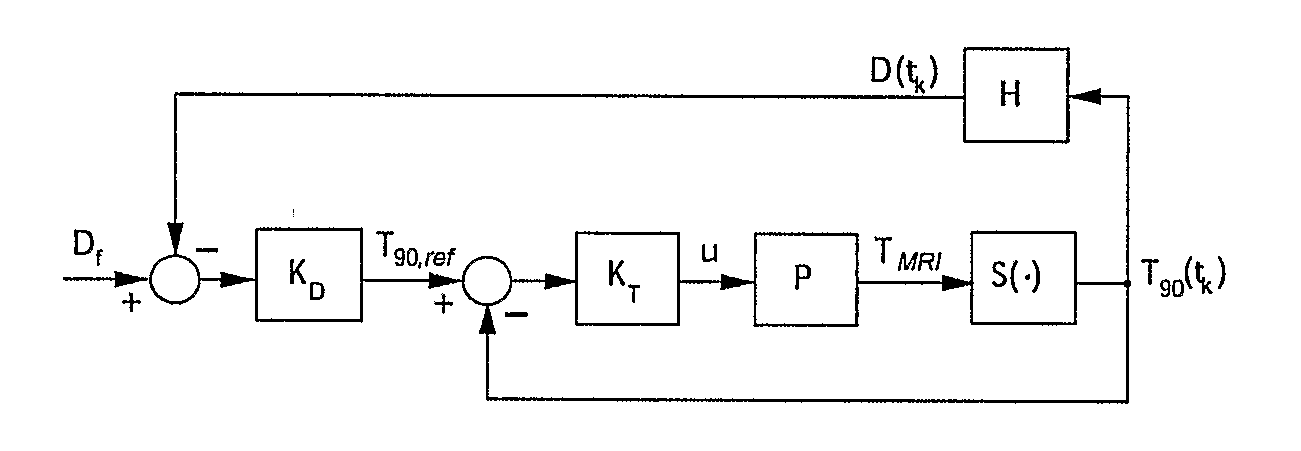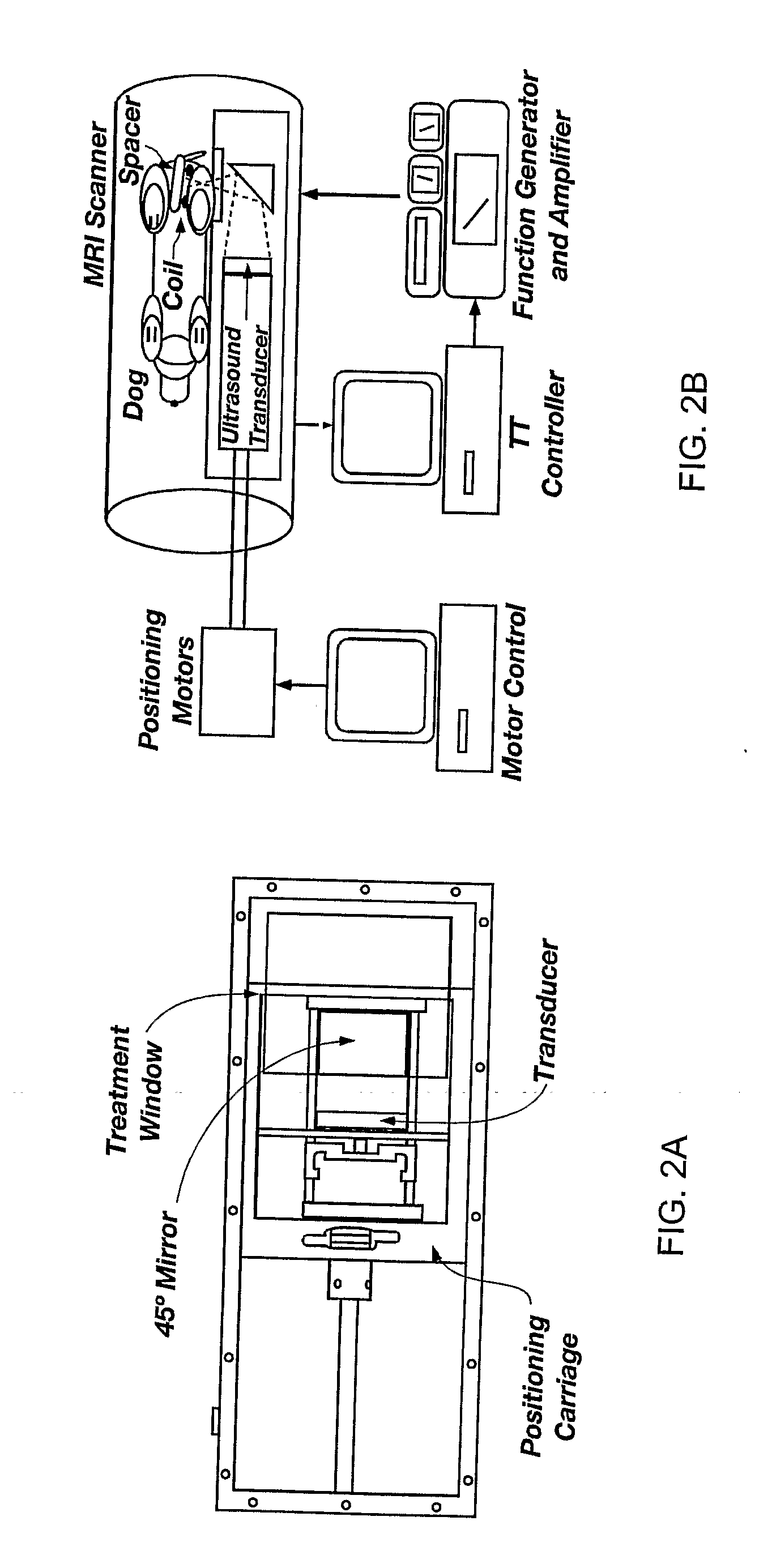Minimum time feedback control of efficacy and safety of thermal therapies
a technology of thermal therapy and safety control, which is applied in the field of medicine and the thermal treatment of tumor tissues, can solve the problems of limiting the affecting the clinical application of thermal therapy, and unintended normal tissue damage, so as to minimize patient pain and discomfort, reduce treatment time, and reduce patient variability. the effect of patient safety
- Summary
- Abstract
- Description
- Claims
- Application Information
AI Technical Summary
Benefits of technology
Problems solved by technology
Method used
Image
Examples
example 1
Phantom Results
[0044]The objective was to deliver Df=10 CEM43° T40 to the selected target region while limiting the temperature at the constraint location to below 6.5° C. A low thermal dose was selected to reduce time and the associated cost required to complete multiple experimental runs. The ultrasound power was constrained (umax=11 W) to reflect hardware limitations and to avoid cavitation.
[0045]The controller tuning parameters were set as follows: prediction horizon, p=4.6;
[0046]control horizon, m=2.3 seconds; and the moving treatment horizon, tTH=4.6 seconds. The treatment horizon was selected to: (a) force the activation of the transducer power constraint at the beginning of the treatment when the normal tissue temperature constraint was not active, and (b) towards the end of the treatment, to ensure that the thermal dose controller, KD, generates an almost attainable reference temperature trajectory to minimize overdosing of the target.
[0047]FIG. 3 depicts the evolution of t...
example 2
In Vivo Canine Results
[0050]The in vivo results were obtained with the ultrasound power constrained to umax=14 W. The desired final thermal dose was set to 20 CEM. Compared to the Example 1 phantom case, a tighter and clinically more realistic normal tissue constraint of 5.5° C. was imposed in the close proximity of the target. By minimizing tissue damage, it was possible to perform multiple tests with the same subject and evaluate the effect of various factors on the performance of the automatic treatment control system.
[0051]FIG. 4 depicts the controller-generated power, MR temperature measurements, and the resulting thermal dose for one of the test runs. The controller tuning parameters p and in were set to 24 and 12 seconds, respectively. The value of the moving treatment horizon, tTH, was set to 24 seconds, which forced the activation of the transducer constraint at the beginning of the treatment. Because of a slower sampling of MR-thermometry measurements during in vivo experi...
example 3
Automatic Control of Focal Trajectory and Intensity of Ultrasound Phased Arrays
[0062]A prototype treatment control system that automatically selects location and intensity of the ultrasound focal zone to deliver the prescribed thermal dose to the target in minimum time without violating explicitly imposed normal tissue safety constraints is developed. The results of its initial evaluation in a computer-simulated treatment of a realistic three-dimensional breast cancer patient are reported in Niu et al. 2006. These results illustrate salient features of the developed prototype, which are necessary to minimize the treatment duration while simultaneously satisfying the normal tissue safety constraints.
PUM
 Login to View More
Login to View More Abstract
Description
Claims
Application Information
 Login to View More
Login to View More - R&D
- Intellectual Property
- Life Sciences
- Materials
- Tech Scout
- Unparalleled Data Quality
- Higher Quality Content
- 60% Fewer Hallucinations
Browse by: Latest US Patents, China's latest patents, Technical Efficacy Thesaurus, Application Domain, Technology Topic, Popular Technical Reports.
© 2025 PatSnap. All rights reserved.Legal|Privacy policy|Modern Slavery Act Transparency Statement|Sitemap|About US| Contact US: help@patsnap.com



